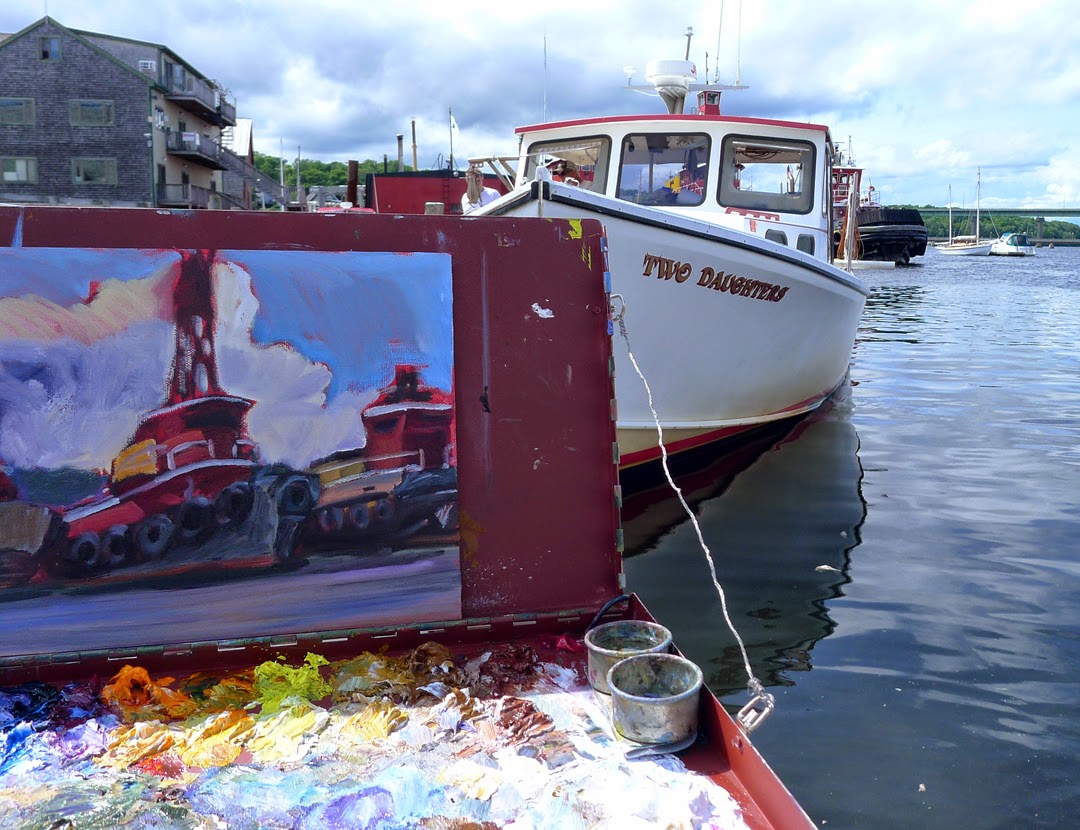 |
| Super-fast wee little sketch of tugboats in Belfast harbor. It came to an abrupt end (see below). |
One of the tasks I love best is driving around scoping out painting sites for my students.
After stopping at the Fireside Inn to make sure everyone’s arrangements are in order for August, I started ferreting around Belfast proper.
 |
| Classic Maine promontory, outside Belfast. |
If you’re looking for an archetypal mid-coast Maine community, you’ll look in vain. Every town and city has its own character; this is far more true than, say, the little villages strung like pearls along the Erie Canal. Rockland has an old brick Main Street that marches along its waterfront. Rockport curves around its harbor and ancient, defunct lime kiln. Camden is crammed full of luxury yachts, wooden boats, gracious inns (and cars). Lincolnville is a beach town. Northport looks like nothing from Route 1, but veer off on a side road and you might stumble across Bayside, with its lovely Victorian cottages marching down to the sea.
 |
| Quiet Maine moment, outside Belfast. |
The Belfast area has been settled since around the time of the Revolutionary War, with the usual burnings and occupations of contested properties during our two wars with the British. In the 19th century, it developed into a shipbuilding center, a legacy still visible in the boatyards on the waterfront.
 |
| The risk you always take painting on a waterfront is that someone will park their boat right in front of you before you finish. Oh, well. |
As wooden ship building faded at the turn of the century, the local economy shifted to seafood and poultry. Unlike many Maine cities, it wasn’t completely dependent on water transport; a spur from the Maine Central railroad was built in 1871. The poultry business is now gone, but the busy little city is now home to galleries and artists.
Sorry, folks. My workshop in Belfast, ME is sold out. Message me if you want a spot on my waitlist, or information about next year’s programs. Information is available here.
